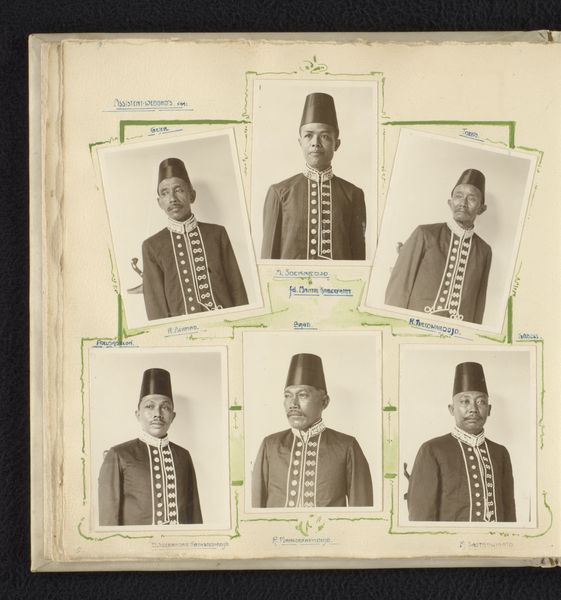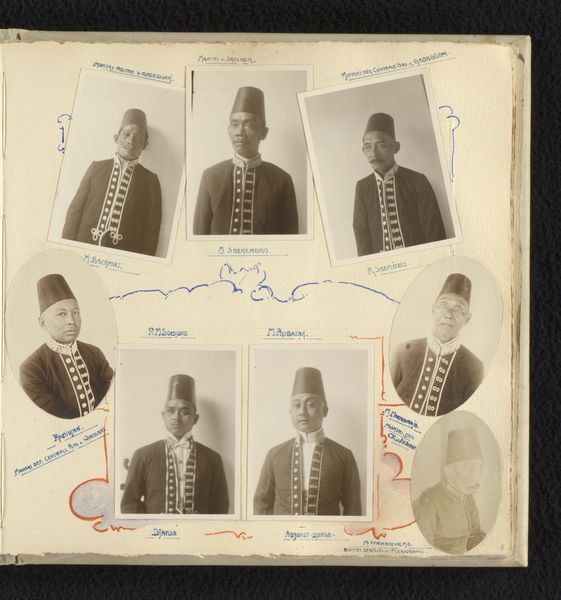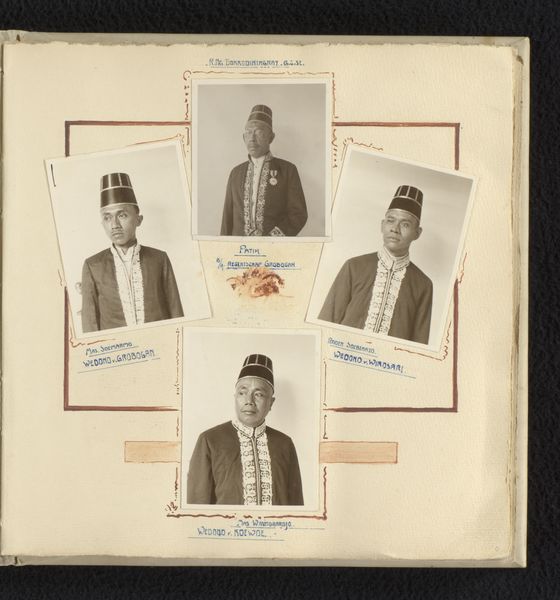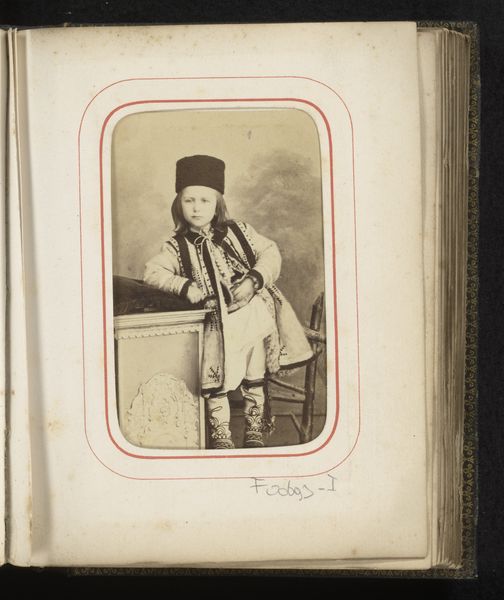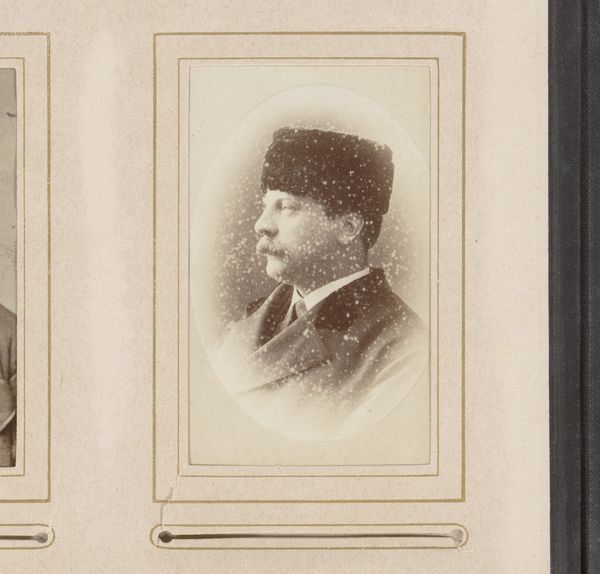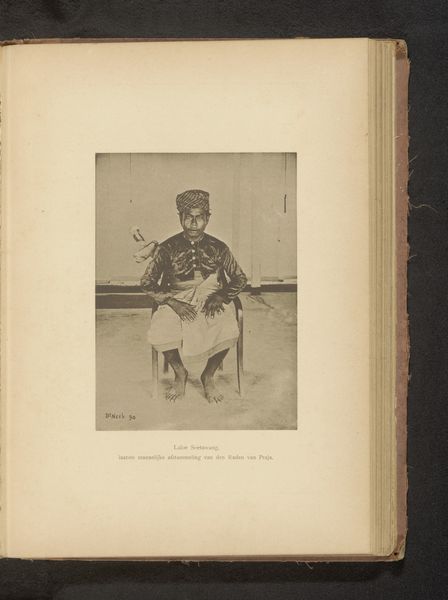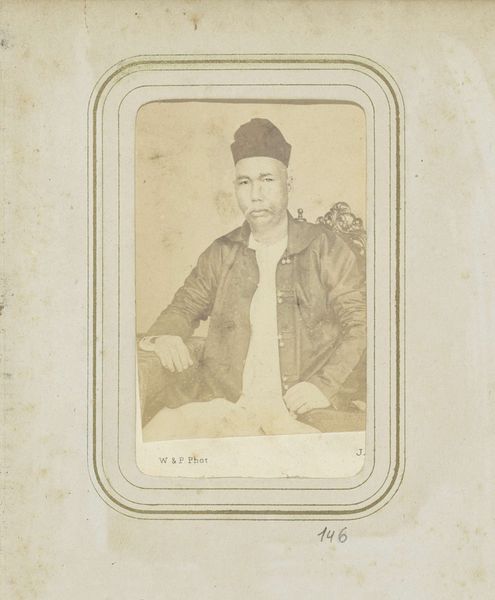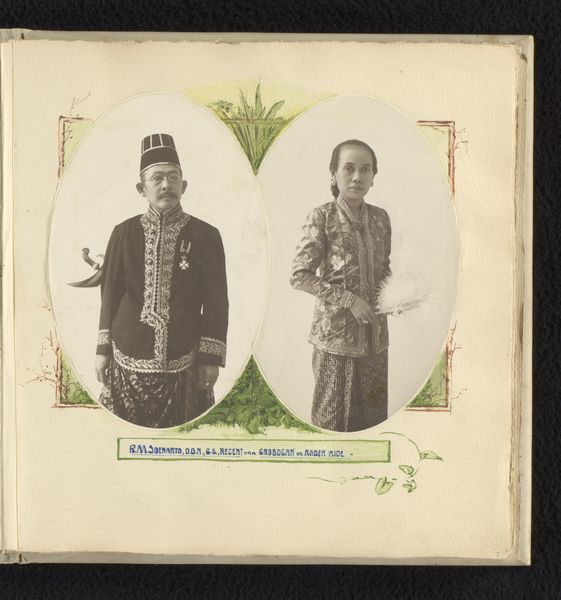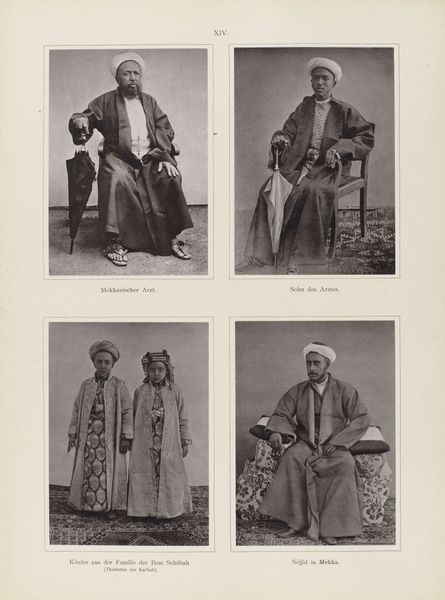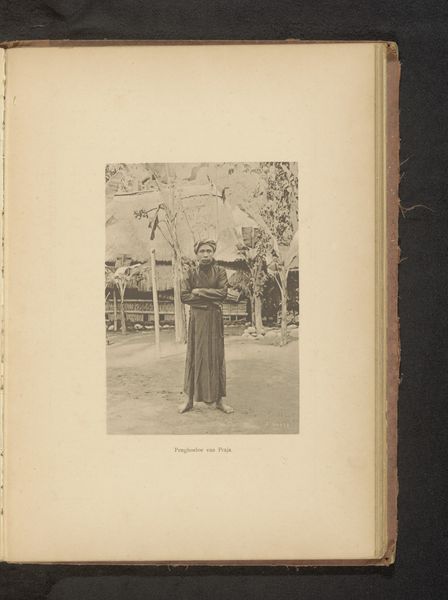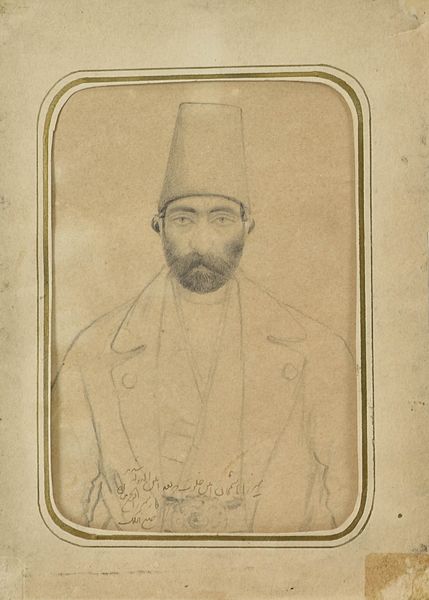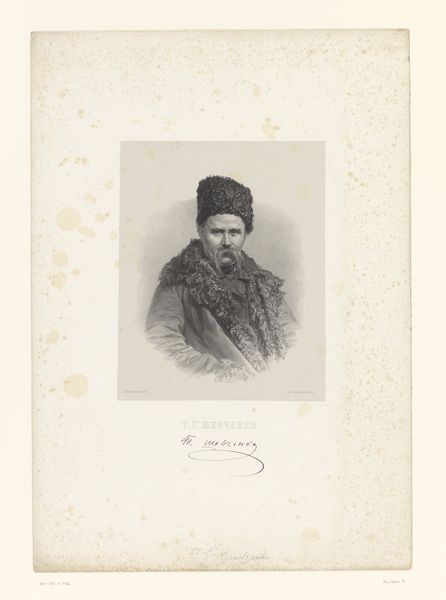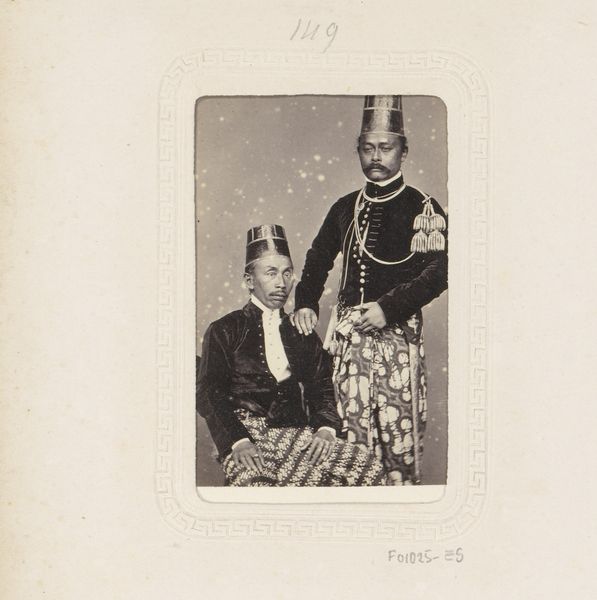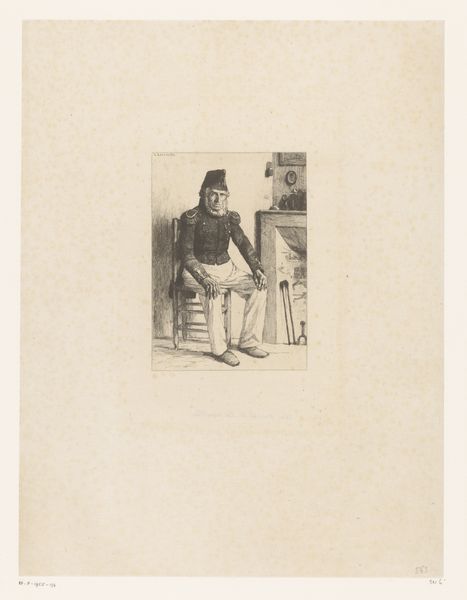
Dimensions: height 240 mm, width 240 mm
Copyright: Rijks Museum: Open Domain
Editor: This gelatin silver print, entitled "Assistent-Wedono's van Grobogan" and dating from around 1910-1928, presents a set of four formal portraits in a traditional style layout, perhaps in a photo album. The uniformity of dress is striking, a symbolic visual system worth unpacking. How would you interpret the cultural narrative within this framework? Curator: That's an insightful starting point. Consider how visual language communicates status and collective identity. The uniformity of the attire, the *peci* hats, and neatly decorated coats serve as markers of a specific societal role within Grobogan, reflecting a commitment to that cultural memory. Notice also the careful, hand-written notations accompanying each figure – almost like hagiographies of local importance. What might this say about the sitter's standing within the Javanese social fabric of the time? Editor: That’s helpful. I didn't really see the way the portraits operate as symbols beyond individual depictions. Curator: These aren't simply names and faces. This is how systems of visual communication work, through deliberate iconographic choices – creating a form of continuous cultural endorsement. The Post-Impressionistic photographic style gives a sense of that continuity too, with tradition and symbolism becoming integral aspects of visual representation. Editor: It’s interesting how an old photograph, which I initially saw as just a record, can reveal these layers of encoded social meanings. Curator: Indeed, every detail - from composition to costume, and including how these portraits were assembled, reflects cultural values.
Comments
No comments
Be the first to comment and join the conversation on the ultimate creative platform.
